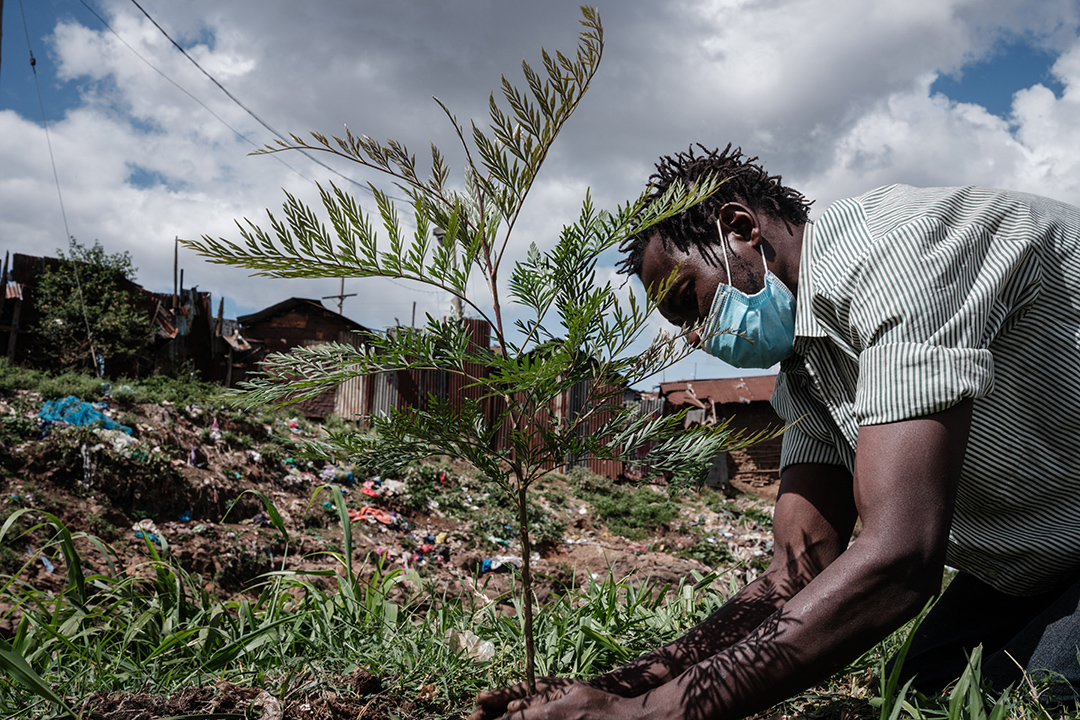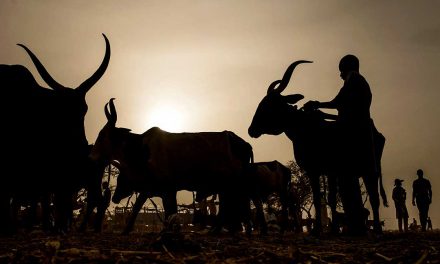The scale of deforestation in Africa is both unprecedented and increasing. According to a report by the UN’s Food and Agriculture Organisation (FAO), the continent lost 3.94 million hectares of forest area each year between 2010 and 2020, compared with 3.4 million each year in the previous decade. This is more than any other region in the world since 2010, with Europe, Asia and Oceania experiencing a net increase in forest cover over the same period, while South America halved its net forest losses from 5.2 million hectares between 2000 and 2010 to 2.6 million hectares between 2010 and 2020.
With central and northern America just dropping into a net loss for the 2010-2020 period, Africa is a clear laggard in the global direction of travel. Not only does this elimination of forest area severely hamper global efforts to combat climate change, with a significant reduction in tree life to take out carbon from the atmosphere, it can also exacerbate the effects of climate change we are already beginning to see in a part of the world most susceptible to it.
Yet steps are being undertaken to emphasise how damaging deforestation is and how seriously reforestation is now being taken on the continent. The president of the Democratic Republic of Congo, Félix Tshisekedi, at COP26 in Glasgow in November last year, pledged to fight deforestation in the world’s second-largest rainforest, the Congo Basin. President Tshisekedi announced a programme aimed at planting one billion trees by 2023, in addition to greenhouse gas emission reduction targets.
Prior to COP26, the DRC’s environment minister, Eve Bazaïba, signalled the strong emphasis the government is putting on forestry protection by announcing plans to ban all log exports from the country as it moves to take a much tougher line against deforestation.

A guard walking through forest in the Lefini natural reserve, 140 km north of Brazzaville. Photo: Desirey Minkoh/AFP
These actions build on the Green Recovery Action Plan for Africa launched by Tshisekedi, in his current role of chairperson of the African Union, last year. The five-year plan targets five different climate priorities, including the sustainable land management of forests and biodiversity protection. At its launch, President Denis Sassou-Nguesso of the Republic of the Congo emphasised the role of the Congo Basin in carbon sequestration, climate regulation, environmental conservation, and biodiversity protection, and he called for financial mechanisms to build its capacity and resilience to climate change.
“A loss of biodiversity also leads to a loss of food from the forest. While there’s also a real decrease in rains, which make it more difficult to manage agriculture,” says Delphine Dekeister, the international projects manager at Reforest Action on the compounded environmental effects of deforestation. “The rain is really unpredictable, large forests make the rain come and when they’re gone people don’t know when it’s coming. This can cause drought as there will be two months without rain and then much heavier rain comes and washes away crops.”
Reforest Action is an organisation that aims to restore ecosystems across the globe; in Africa it has reforestation projects in Morocco, Malawi, South Africa, as well as throughout West Africa.
Dekeister argues that they try to work with local organisations and stakeholders to achieve holistic benefits beyond just having more trees, creating a dialogue with communities to build an economic model, whereby they are connected to local markets and able to make money from a rich and biodiverse forest.
Another option for a Reforest Action project to make money is by selling off the carbon stored in the trees as offset on the international voluntary carbon markets, through which organisations that release carbon into the atmosphere try to allay the damage done by this.
Verra is one organisation that verifies carbon offsetting projects and it has seen the market explode over the past few years. Verra’s Voluntary Carbon Standard (VCS) is the most widely used voluntary greenhouse gas (GHG) emissions programme, which across the globe has reduced or removed more than 630 million tonnes of carbon and GHG emissions from the atmosphere
Once Verra has certified a carbon offsetting programme and quantified how much carbon a reforestation project in DRC is reducing for instance, then the project can issue a tradeable GHG credit called a Verifiable Carbon Unit (VCU), which can be sold on the carbon markets to offset a company or individual’s carbon emissions.

A member of the Canaan Riverside Green Peace voluntary group takes care of a young tree planted on the banks of the Nairobi River, in Dandora slum in the Kenyan capital. Every weekend, the group cleans the filthy river and about 500 trees have been planted to create a forest, which filters the smoke from the dumping site nearby. Photo: Yasuyoshi Chiba/AFP
Despite the clinical and calculating nature of the verification process of a voluntary carbon offsetting programme, Verra insists, as a rigorous standards verifier, that these projects go beyond just planting a few trees and leaving them alone, with the land taken up now out of bounds to the local communities that live with it.
“A project doesn’t just put a fence around a forest and say, ‘stay out’ and that’s it. Livelihoods are a huge part of it,” says Naomi Swickard, the chief programme officer at Verra. “So, if timber extraction was a primary source of deforestation, then a project will protect the forest and hire people who were previously extracting timber to be forest guards, while also planting stands of trees in areas that are degraded, so that there is a new source of timber – but in an area that is not reliant on cutting down native forests.”
One such organisation that undertakes reforestation projects in Africa is The International Small Group and Tree Planting Program (TIST). By working with smallholder farmers across Kenya, Uganda, and Tanzania, as well as India, TIST projects have seen just under 21 million trees planted in Africa and 8.5 million tonnes of carbon dioxide sequestered from the atmosphere. This has been achieved by working with 111,581 participants across 16,265 groups in those three countries. TIST has seen a huge uptick in interest in the past few years.
“Lots of people have finally caught on [to] that tree growing programme,” explains Ben Henneke, founder of TIST, who also notes how diverse those who buy carbon offsets have become. “It’s all kinds of companies; large oil companies initially have now been joined by retailers and internet companies.”
While the influx of offsetting means more money coming into Africa reforestation, it is crucial that projects aren’t dictated by what is best for the globe’s carbon polluters.
“There has to be a focus on preventing deforestation – and reforestation and restoration,” explains Swickard on where market priorities lie and how preventing reforestation is just as important as new offset forests. “There is huge focus in markets right now on credit that improves sequestration, so mostly forestation, reforestation and some soil carbon activities as well.
“Again, primarily because there is an interest in the future offsets, or whatever they end up being called, [there is a] focus on that negative side of the equation. In other words, storing more carbon as opposed to avoiding emissions.”
Africa, though, has to be sure that reforestation is driven by its needs, to stop the environmental and societal effects of deforestation on the continent and not offsetting the needs of other parts of the world.
As Henneke puts it: “Trees help cool the soil, they slow down erosion. Something as simple as shade is an environmental justice issue, as it affects the poorest people. Trees also slow down the speed of raindrops, so roots hold into the soil better. And, in a managed forest, there’s less travelling to go and get firewood so, particularly, girls can spend more time in school.
The beneficial effects of reforestation in a biodiverse and polyculture way are too numerous to list. But from rainfall and droughts to healthcare, less pollution and an overall better environment, reforestation programmes that puts African needs at their centre are critical.
Would you like to gain an understanding of your own impact on the environment? Calculate your own carbon footprint here
Joe Walsh is a freelance journalist based in Johannesburg. He writes about the environment, energy and the green economy as well as politics and society for British publications, including Environmental Finance, the New Statesman and The New European.












